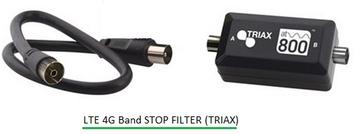LTE ICIC vs. eICIC: Understanding the Differences
Advertisement
This article explains the differences between LTE ICIC (Inter-Cell Interference Coordination) and eICIC (Enhanced Inter-Cell Interference Coordination). Both are crucial techniques for minimizing intra-frequency interference between neighboring cellular base stations in LTE networks.
LTE ICIC: Coordinating for a Quieter Network
ICIC, introduced in 3GPP Release 8, aims to reduce interference experienced by a base station from its nearby neighbors. The core idea is to strategically lower the power of certain subchannels. This effectively limits the reception range of those subchannels, ensuring they’re primarily used by devices close to the base station. This prevents these transmissions from interfering with neighboring base station operations.
In essence, LTE ICIC focuses on reducing interference specifically on traffic channels.
eICIC: Enhanced Coordination for Heterogeneous Networks
eICIC, defined in 3GPP Release 10, builds upon ICIC with enhancements designed for heterogeneous networks. These networks consist of macro base stations (high power, large coverage) and pico base stations (low power, smaller coverage).
In this scenario, macro base stations transmit high-power signals to cover a wide area, while pico base stations provide coverage in smaller, localized areas. eICIC uses a technique involving blank subframes in the LTE frame structure of the macro cell. These “almost blank subframes” (ABS) mitigate interference between macro and pico (or femto) cells.
The trade-off is a potential reduction in the overall capacity of the LTE system. However, this can be addressed by dynamically adjusting subchannel allocation to pico cells based on real-time traffic demands.
What’s inside an ABS (Almost Blank Subframe)?
While “blank,” these subframes aren’t completely empty. They carry essential signals like:
- Primary and Secondary Synchronization Signals (PSS/SSS)
- Physical Broadcast Channel (PBCH)
- Paging information
- Cell-specific Reference Signals (CRS)
- System Information Block 1 (SIB1)
This design ensures compatibility with older LTE releases (3GPP R8 and R9).
Key Differences Summarized:
- Scope of Interference Reduction: Unlike ICIC, eICIC reduces interference on both traffic and control channels.
- Network Type: eICIC is specifically designed for heterogeneous networks (macro/pico/femto cells), while ICIC is more general.
- Signaling: The configuration of blank subframes in the LTE frame structure is communicated via the X2 interface by picocells and using OAM (Operations, Administration, and Maintenance) by femtocells in a closed subscriber group (CSG) environment. CSG limits services to authorized subscribers only.
- ABS: eICIC uses almost blank subframes to reduce interference.
In short, eICIC represents an enhanced approach to inter-cell interference coordination, tailored for the complexities of heterogeneous LTE network deployments.
Advertisement
 RF
RF


